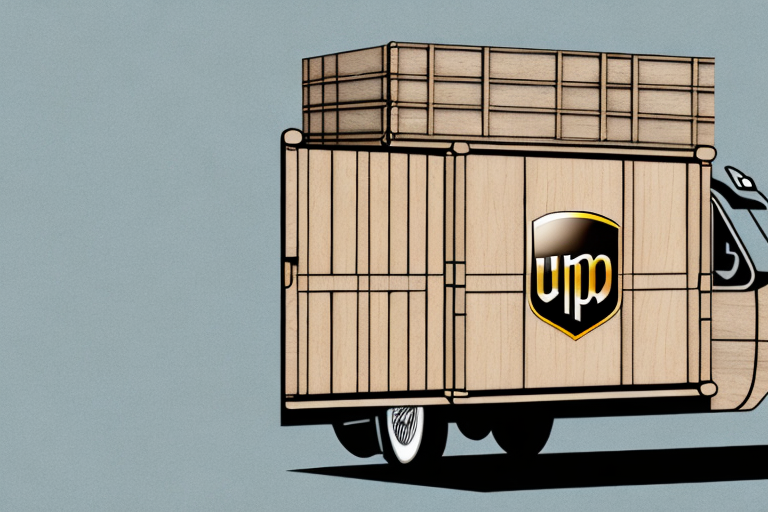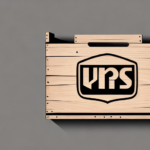Introduction to UPS Crate Shipping
Shipping large or oversized items can be a daunting task, especially when traditional shipping methods fall short. UPS crate shipping offers a reliable and secure solution for transporting bulky items such as machinery, large electronics, and furniture. This service is designed to handle freight that requires specialized handling, ensuring your items arrive safely and on time.
UPS crate shipping is favored for its robust freight network, comprehensive insurance options, and high level of security. Understanding the various aspects of this service, including rates, types of shipping, and best practices, can help you make informed decisions and optimize your shipping costs.
Types of UPS Crate Shipping Services
Less Than Truckload (LTL) Shipping
LTL shipping is ideal for shipments that do not require an entire truck. This option allows you to share transportation costs with other shippers, making it a cost-effective choice for smaller freight. LTL shipments typically range from 150 to 15,000 pounds.
Full Truckload (FTL) Shipping
FTL shipping is suited for large shipments that demand an entire truck. This method ensures dedicated transportation, reducing the risk of damage and delays. FTL is often more expensive than LTL but offers faster transit times and enhanced security.
Expedited Shipping
For time-sensitive shipments, UPS offers expedited shipping services that prioritize your crate, ensuring it arrives as quickly as possible. While this service comes at a higher cost, it guarantees timely delivery, which is crucial for urgent or critical shipments.
International Crate Shipping
UPS provides international crate shipping options, allowing you to send your goods worldwide. This service includes customs clearance and adheres to international shipping regulations, though it may involve additional complexities and costs.
Factors Influencing UPS Crate Shipping Rates
Weight and Dimensions
The size and weight of your crate are primary factors in determining shipping costs. UPS employs a dimensional weight pricing model, which considers both the physical dimensions and the actual weight of the shipment.
Shipping Distance
The distance between the origin and destination plays a significant role in shipping rates. Longer distances generally incur higher costs due to increased fuel consumption and labor.
Type of Service
Choosing between LTL and FTL, as well as opting for expedited shipping, directly impacts the overall cost. LTL is typically more affordable, while FTL and expedited services offer faster delivery at a higher price.
Value of Shipped Items
The declared value of your items can affect shipping rates, especially if additional insurance is required. Higher-value items may incur extra costs to ensure adequate coverage during transit.
Additional Services
Services such as liftgate assistance, specific delivery times, and special handling requests can lead to additional fees. It's essential to factor in these potential costs when budgeting for your shipment.
Calculating UPS Crate Shipping Costs
Using the UPS Freight Calculator
The most straightforward way to estimate UPS crate shipping costs is by utilizing the UPS Freight Rate Estimate tool. This online calculator requires details such as crate dimensions, weight, origin, and destination to provide an accurate cost estimate.
Manual Calculation
If you prefer a manual approach, you'll need to gather information on the crate's weight and dimensions, the shipping distance, and the type of service required. Refer to UPS's rate charts available on their website for detailed pricing information.
Remember to include any additional services or surcharges that may apply to your shipment, ensuring a comprehensive cost assessment.
Tips to Save on UPS Crate Shipping
Choose the Right Shipping Method
Opting for LTL shipping when appropriate can significantly reduce costs compared to FTL. Assess your shipment size and select the most economical option that meets your delivery requirements.
Consolidate Shipments
Combining multiple shipments into a single crate can lead to substantial savings. Consolidation minimizes the number of shipments, reducing overall transportation costs.
Ship During Off-Peak Times
Shipping during non-peak periods can help you avoid higher rates often associated with high-demand seasons. Planning your shipments outside of peak times can lead to better pricing.
Leverage Discount Programs
UPS offers various discount programs for frequent shippers. Enrolling in these programs can provide access to reduced rates and additional benefits, enhancing your shipping efficiency.
Compare Rates with Other Carriers
While UPS is a leading carrier, it's beneficial to compare rates with other reputable carriers like FedEx and DHL. Evaluating different options ensures you receive the best value for your shipping needs.
Common Mistakes to Avoid in UPS Crate Shipping
Poor Packaging
Inadequate packaging can lead to damage during transit, resulting in additional costs and delays. Always use high-quality packing materials and adhere to UPS's packaging guidelines to safeguard your items.
Incorrect Service Selection
Choosing the wrong shipping service can either inflate costs or compromise delivery timelines. Carefully assess your shipment requirements to select the most appropriate service type.
Neglecting Additional Fees
Failing to account for extra fees such as liftgate services or specific delivery instructions can result in unexpected expenses. Review all potential charges before finalizing your shipment.
Improper Declaring of Item Value
Accurately declaring the value of your items is crucial for insurance coverage. Underreporting can lead to insufficient compensation in case of loss or damage.
Comparing UPS Crate Shipping with Other Carriers
FedEx Freight
FedEx Freight offers comprehensive freight shipping solutions similar to UPS. Comparing service options, rates, and transit times can help you determine the best fit for your shipping needs.
DHL Freight
DHL Freight provides reliable international shipping services with extensive global coverage. Assessing their offerings against UPS can guide you in selecting the most efficient carrier for your destinations.
Key Considerations
- Transit Time: Evaluate the delivery speed each carrier offers, especially for time-sensitive shipments.
- Network Coverage: Consider the carrier's presence in your required shipping regions, both domestically and internationally.
- Cost: Compare shipping rates, including any additional fees and discounts available.
- Service Quality: Look into each carrier's reputation for reliability, customer service, and handling of freight shipments.
Tracking and Managing Your UPS Crate Shipments
UPS Tracking Tools
Once your crate is shipped, you can monitor its progress using the UPS Tracking tool. Enter your tracking number to receive real-time updates on the status and location of your shipment.
Handling Delays and Issues
Despite UPS’s reliability, delays or issues can occur. If your shipment is delayed or lost, promptly contact UPS customer service with your tracking information to initiate a resolution process. UPS may offer compensation or expedite a replacement shipment depending on the situation.
Best Practices for Tracking
- Regularly check tracking updates to stay informed about your shipment’s status.
- Set up notifications for real-time alerts on any changes or issues.
- Keep all shipment documentation organized and accessible for reference.
Preparing Your Items for UPS Crate Shipping
Proper Packaging
Use sturdy crates made from durable materials to protect your items during transit. Ensure that the crate is appropriately sized to prevent movement and potential damage.
Accurate Labeling
Clearly label your crate with accurate shipping information, including the recipient's address and contact details. Proper labeling facilitates efficient handling and reduces the risk of misdelivery.
Securing Items Inside the Crate
Use padding materials such as foam or bubble wrap to secure loose items within the crate. This prevents shifting and minimizes the risk of damage during transportation.
Compliance with UPS Guidelines
Adhere to UPS's packaging and shipping guidelines to ensure your crate meets all requirements. Non-compliance can lead to additional fees or delays in shipping.
Maximizing Value with UPS Crate Shipping
To achieve the best value with UPS crate shipping, it's essential to understand all aspects of the service, from rate factors to proper preparation. By selecting the appropriate shipping method, optimizing packaging, and leveraging cost-saving strategies, you can ensure a cost-effective and efficient shipping experience.
Additionally, regularly evaluating your shipping practices and staying informed about UPS's offerings will help you adapt to changing needs and maintain optimal shipping performance.
Stay Informed and Educated
Continuous learning about UPS services, industry trends, and best practices can enhance your shipping strategy. Utilize resources such as UPS's official website and industry publications to stay updated.
Seek Professional Advice
If you're unsure about any aspect of UPS crate shipping, consider consulting with a logistics professional. Their expertise can provide valuable insights and help you navigate complex shipping requirements.
Implement Feedback
Collect and act on feedback from your shipping experiences. Identifying areas for improvement can lead to more efficient and cost-effective shipping processes in the future.






















